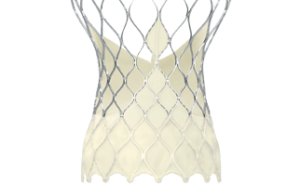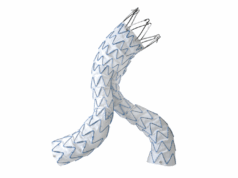
The SURTAVI trial indicates that transcatheter aortic valve implantation (TAVI) with CoreValve/CoreValve Evolut R (Medtronic) is non-inferior to surgery for the management of severe aortic stenosis in intermediate-risk patients. In this interview, investigator Michael Reardon (Methodist DeBakey Heart and Vascular Center, Houston, USA) tells Cardiovascular News that the higher rate of pacemaker implantation associated with CoreValve is a greater concern for intermediate-risk patients, because of their probable longer life expectancy, than it is for higher risk patients, but it is an issue that will be resolved.
Why do you think CoreValve did not provide a survival benefit for intermediate-risk patients when it did for high-risk patients?
In a study of the causes of death in the randomised CoreValve US Pivotal High-Risk Trial (Gaudiani et al. J Thorac Cardiovasc Surg 2017 Epub), my colleagues and I looked carefully at the superior survival with CoreValve in this study and divided deaths (instantaneous hazard risk of death) into procedural (0–30 day), recovery (one to four months) and late (four months to two years). The only time period where there was a difference was one to four months during recovery—TAVI did well here whereas surgery did not because in this high-risk group, the patients just could not fully recover from the insult of the surgery. But in the lower risk group of SURTAVI, the surgery patients were stronger and could recover from insult; the same analysis shows both surgery and TAVI cohorts doing well in all time periods (essentially flat and at close to 0 after 30 days), which meant that TAVI could only “win” in the early procedural period. In this trial, the procedural surgery outcomes were better than any other randomised trial and, in fact, less than half than those seen in the PARTNER IIA study. So, we would not expect superiority with CoreValve in SURTAVI. On the flip side, despite the outstanding surgery results, TAVI did just as well.
The average age of patients in the study was 79 years. Do you think there needs to be more studies looking at younger as well as lower risk patients?
Yes, and I think that we are likely to see somewhat younger ages in the two low-risk trials that are currently enrolling [Both Edwards Lifesciences and Medtronic are evaluating their respective devices in low-risk patients].
Given that lower risk patients might be expected to have a longer life expectancy than higher risk patients, is the higher need for a pacemaker with CoreValve a greater concern for intermediate-risk patients?
Yes it is. I would note that with the second-generation Evolut valve, the larger studies specifically about this valve from Europe and the US show lower pacemaker rates than observed with previous generations of the valve. The third-generation Evolut Pro was presented at the ACC [now FDA approved] and had a 10% pacemaker rate and very low paravalvular leak rate with no moderate or severe paravalvular at all. This pacemaker issue is an engineering problem that will be solved
Based on the available data, what factors should be considered when choosing between surgery and TAVI in the intermediate-risk patient?
Age and overall physiologic status as well as anatomic characteristics should be considered. Most of us are very comfortable already with TAVI for those over 80 or over 75 with previous heart surgery. If the patient’s physiologic status is poor, then these ages decrease. Bicuspid valves were an exclusion for all of the randomised trials and represent >20% of those 80 or above needing aortic valve replacement and probably >50% of those 60—70 needing aortic valve replacement, so surgery is “not dead”.










